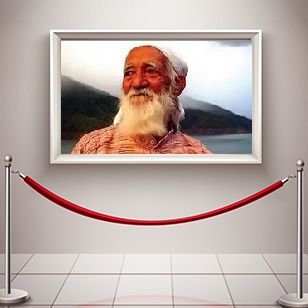
CEO Insights Hall of Fame: 8 Legends Who Keep India Evergreen

The year was 1973 when one of the largest environmental protests in Indian history took place in the Garhwal Himalayan region of Uttarakhand. Called the Chipko Movement, it involved villagers, especially a large number of women who opposed government-backed industrial giants from felling trees in a non-violent manner by hugging the trees. The movement spread across the nation and even worldwide, hailing the significance of relationships between community rights, sustainable development, and environmental preservation. It even made legislative and policy changes, such as the adoption of legislation protecting forests and the acknowledgment of local control over forest resources. In honor of history’s greatest environmental movements, the CEO Insights Hall of Fame brings together legendary individuals who committed their whole life to saving the environment.
Sunderlal Bahuguna: The Man Who Brought Global Attention to the Himalayas
 Indian social activist and renowned environmentalist Sunderlal Bahuguna is highly praised for his efforts in spearheading the Chipko Movement in the Himalayas. He worked without respite for the cause of Himalayan forest conservation. Aside from the Chipko movement, he also participated in the Anti-Tehri Dam movement during 1980-2004. In 2009, he received India's second-highest civilian honor, the Padma Vibhushan, for his lifelong commitment to social and environmental issues.
Indian social activist and renowned environmentalist Sunderlal Bahuguna is highly praised for his efforts in spearheading the Chipko Movement in the Himalayas. He worked without respite for the cause of Himalayan forest conservation. Aside from the Chipko movement, he also participated in the Anti-Tehri Dam movement during 1980-2004. In 2009, he received India's second-highest civilian honor, the Padma Vibhushan, for his lifelong commitment to social and environmental issues.
A Childhood Surrounded by Devastation
Born in Maroda village, close to Tehri, Uttarakhand, on January 9, 1927, Bahuguna grew up around the magnificent splendor of the Himalayas and the natural way of life of the locals. At the same time, he witnessed an increasing threat of deforestation that devastated the livelihood of his folk.
Led Chipko Movement and Others Inspired by Gandhian Principles
Inspired by Mahatma Gandhi's ideologies, Bahuguna took matters at a young age. He took part in the liberation movement, in which his actions mirrored Gandhi's teachings of non-violence, simplicity, and self-reliance.
His movement to shine came during the early 1970s, in which Bahuguna became a leader of the Chipko Movement. He expanded its scope and influence by taking the aid of another leader named Chandi Prasad Bhatt, where local women began to participate in this peaceful movement. Bahuguna's stewardship brought national attention to the movement with his initiatives on conserving trees to stop soil erosion, floods, and climatic imbalance, highlighting the ecological significance of forests in addition to their economic value.
Walked Miles Across the Himalayan Forests to Stop Commercial Logging
Bahuguna walked 5,000 kilometers across the Himalayan forests in the 1980s to raise awareness on forest conservation.
His walk saw fruition when the Indian government banned commercial logging in the Himalayan region in 1981.
Prompted Discussion on the Effects of Construction Projects
Bahuguna's opposition to the Tehri Dam's building on the Bhagirathi River was another turning point in his strides. He raised alarms that the project would harm the delicate Himalayan ecosystem, evacuate thousands of people, and plunge historic cultural sites. He went on a hunger strike many times, including one that lasted 74 days in 1995. Even though his efforts were in vain, they did, however, spike discussion around the expenses of major construction projects and how they affect the environment and the inhabitants.
Also Read: CEO Insights Hall of Fame: 5 Pioneers Who Defined the Indian IT Industry
Upon seeing Bahuguna’s actions, many environmentalists came forward to voice awareness of environmental protection in India and beyond. He was awarded the Right Livelihood Award, also known as the "Alternative Nobel Prize," and the Padma Vibhushan in 2009.
Bahuguna breathed his last on May 21, 2021, at the age of 94 due to COVID-19 complications. He may have left the world, but his work and teachings still serve as an inspiration for environmental justice movements around the globe.